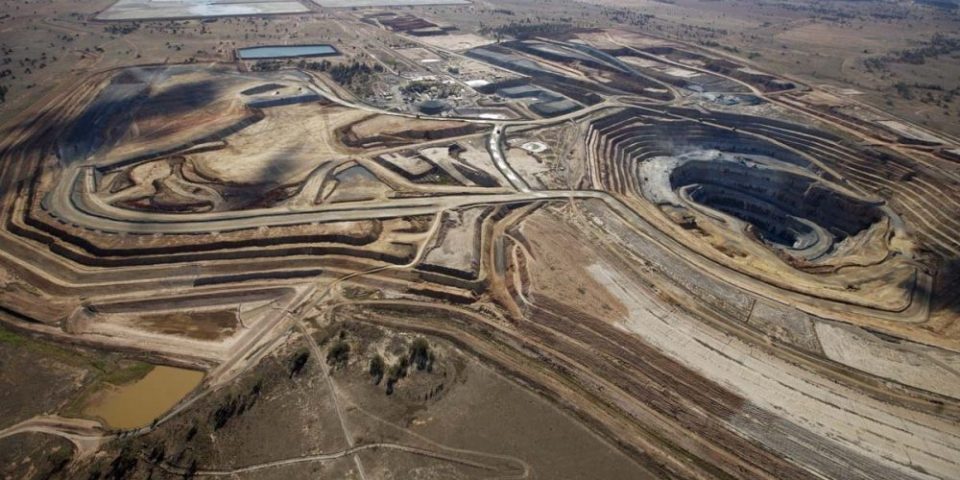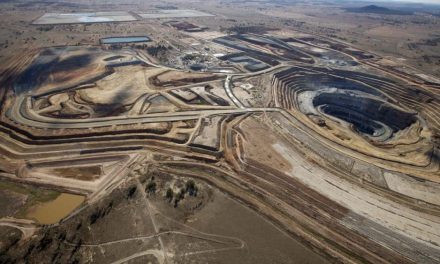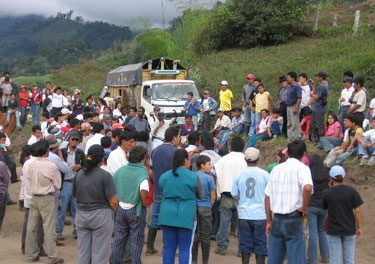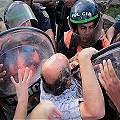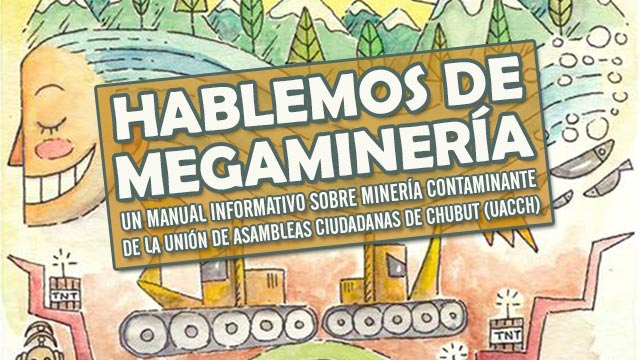Water that is undrinkable. Air that is better left unbreathed. A community impoverished, living above mountains of gold. These are some of the contradictions of Andalgalá, a town of 17,000 inhabitants in Catamarca, Argentina, 240 kilometres from the provincial capital, home for ten years now to the largest gold and copper mine in the country, and one of the largest in the world. The company, Minera Alumbrera, a Swiss-[UK]-Canadian consortium made up of Xstrata, Goldcorp and Northern Orion Resources, has been accused by residents of polluting land, air and water. Social groups, government and judicial agencies of the northwest Argentina are warning that the growing contamination is affecting three Argentine provinces: Catamarca, Tucumán and Santiago del Estero.
But the biggest disaster, they warn, will begin shortly: a new mine is proposed, three times larger, even closer to the town and among the peaks which provide water to all of the region. The local group, Vecinos Autoconvocados (Self-Organized Neighbours), state that this will be the coup de grace for the town. They are demanding a referendum like that of Esquel.
Rich Mountains, Poor People
A six hour bus trip from San Miguel de Tucumán. Five hours from San Fernando del Valle de Catamarca. The roads are always rough and gravelled, and border on precipices, the climate is decertified. But Andalgalá is far from being a town: it is a city. In its centre there are supermarkets, cell phones, high-speed internet on every block, some very impressive houses and colourful SUV's. There are also schools that lack roofs, only one hospital which always has hours-long lines, and poor neighbourhoods indistinguishable from the shanty villages circling Buenos Aires. Everyone greets one another in the plaza, the streets or the cafés. Everyone knows each other, and everyone knows what position their neighbour takes on the question of the mines. In the distance the mountains are visible, hiding and holding in them that which everyone is talking: the gold, the copper and one of the largest mining operations in the world.
Yes or No
The governor of the ruling Justicialista party, José Eduardo Perea, is 49 years old. He has always lived in Andalgalá. Dark complexioned, hair straight and black, combed sharply to the left. During his campaign which carried him to the mayor's office, he had promised a referendum so the people could decide what to de with the mining operation of Agua Rica. But now he offers an excuse: “The people should decide, for sure, but they are not ready to make a decision, they don’t know the facts well. Still, I can assure you that under my leadership there hasn't been any contamination,” he told Pagina 12. When asked when the populace will be ready for a referendum, he says he doesn't know, but continues assuring that the mining company is innocent of everything.
The Autoconvocados are pushing for a binding referendum for the end of the year, but they know that it could be a double-edged sword. If they should achieve the referendum, nobody knows how it will turn out. This is a very different situation than that in Esquel. “Here people are very needy, brothers, the company is oiling palms everywhere, letting crumbs fall in many places, and the people here, unfortunately, depend upon Alumbrera to survive,” admits Roberto Cecenarro, one of the pioneering activists against the company. The Autoconvocados reply: “We have nothing to lose. We all have to understand that without gold we can live – but without water we cannot survive.”
Promises and Actions
October 1994. Cinema Teatro Catamarca, in front of the main plaza in San Fernando del Valle de Catamarca. Governor Arnoldo Castillon, the Argentinian Secretary of Mining – currently Governer of La Rioja provience – Angel Maza; and Argentinian president, Carlos Menem, announce the launching of construction of the infrastructure of the mines of Bajo la Alumbrera, in front of a hundred euphoric functionaries and company officials. “This is the Argentina that we need, that is open to the world, which recieves investments, which promises a future,” says Menem, in his perfect blue suit. Three years later, Menem returned with his entire cabinet to Andalgalá to inaugurate the phase of mining operations. True to his style, he himself triggered the first explosions in the mountain and the first milling of ore.
The publicity campaign of the company and of the politicians who have followed promised the construction of a suburb of 5000 persons, new schools, a high-tech hospital, paved roads and 6000 jobs. This propaganda opened all sorts of doors, but none of these projects were carried out. The Autoconvocados say that no more than 90 residents of Andalgalá work in the mines. The rest, they say, are “foreign professionals.”
Canadian mining company, Northern Orion (stakeholder in Alumbrera), will soon begin the construction of infrastructure of another mining project, three times larger than Bajo Alumbrera, only 17 kilometers from the town, in the peaks of the mountains located directly facing the center of the city. They plan to extract gold, silver and molybdenum. “The development of this project is technically possible, and could be carried out as an operation of low costs and long life,” say the company reports. They plan to dynamite at least 70,000 tons of ore per day, for up to 30 years.
The Vecinos Autoconvocados point out that this mountain is the origin of three rivers which provide all the water to the region: almost a quarter of the entire province. Everyone fears that this will be the final blow to the town. Already many houses and lands are showing placards offering them “for sale.”
by Darío Aranda, Página 12 Newspaper
December 18th, 2005

